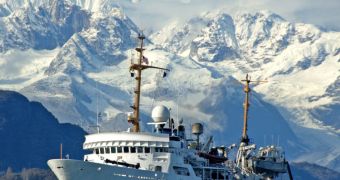Experts from the US National Oceanic and Atmospheric Administration (NOAA) have found in a new study that the world's oceans and forests consume about half of the amount of carbon dioxide released into Earth's atmosphere.
Even as emissions increase, natural ecosystems are still capable of conducting clean-ups to a large extent. However, increasing this storage capability does not come cheap. In the case of oceans, capturing and storing increasing amounts of CO2 leads to accelerated acidification.
The figures NOAA compiled refer to the amount of carbon dioxide put into the atmosphere from human activities, including burning fossil fuels. Since the beginning of the Industrial Age, these emission levels have increased considerably.
The new investigation was carried out by investigators at NOAA and the University of Colorado. Details of the research effort were published in the latest issue of the top scientific journal Nature.
Experts say that their work focused on more than 50 years of measurements, which dealt with how much CO2 was released into the atmosphere, and absorbed by various ecosystems. The planet naturally stores carbon in forests, waters, certain types of rocks, and some types of soils.
The main conclusion of the study is that the carbon-absorbing sinks have not yet reached full capacity. However, they are showing signs of fatigue, and may soon become unable to keep up with increased greenhouse gas emissions.
“Globally, these carbon dioxide ‘sinks’ have roughly kept pace with emissions from human activities, continuing to draw about half of the emitted CO2 back out of the atmosphere. However, we do not expect this to continue indefinitely,” researcher Pieter Tans explains.
The expert, a coauthor of the Nature paper, holds an appointment as a climate researcher at the NOAA Earth System Research Laboratory (ESRL), in Boulder, Colorado. The lead author of the work is UCB investigator Ashley Ballantyne.
The study also showed that the amount of CO2 natural sinks absorb has increased by 200 percent over the last 50 years. This is an extremely fast pace, and it's doubtful that the storage sites will be able to continue this type of growth indefinitely.
The more greenhouse gases are left in the atmosphere, the faster global warming occurs, and the faster climate change moves. Therefore, measures to reduce emissions are desperately needed, experts say.
“The uptake of carbon dioxide by the oceans and by ecosystems is expected to slow down gradually. As the oceans acidify, we know it becomes harder to stuff even more CO2 into the oceans. We just don’t see a letup, globally, yet,” Tans explains.

 14 DAY TRIAL //
14 DAY TRIAL //